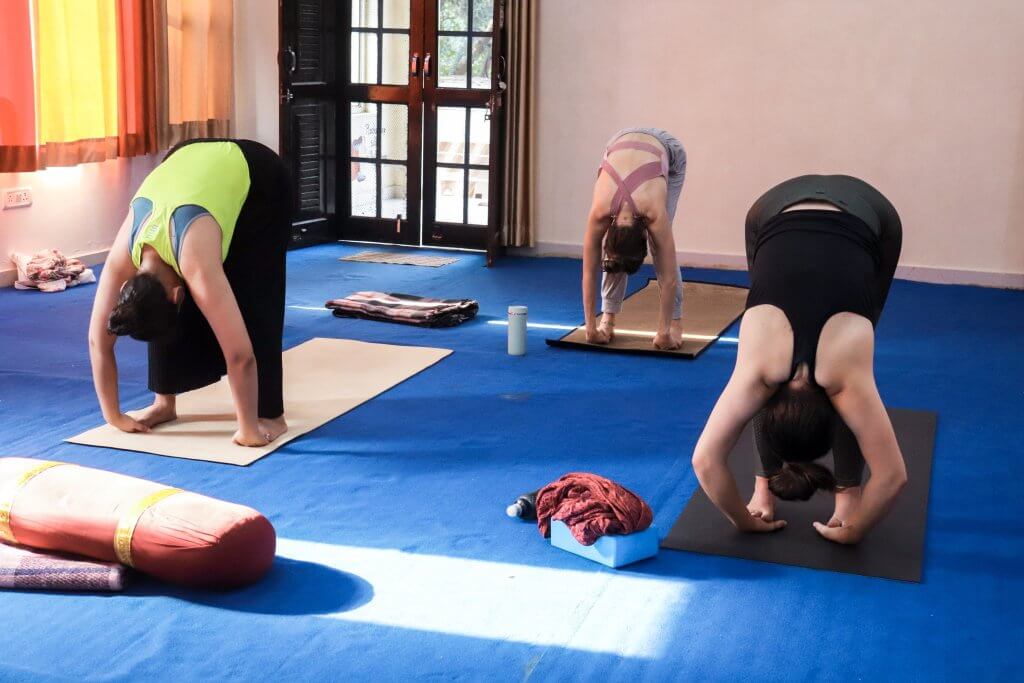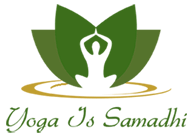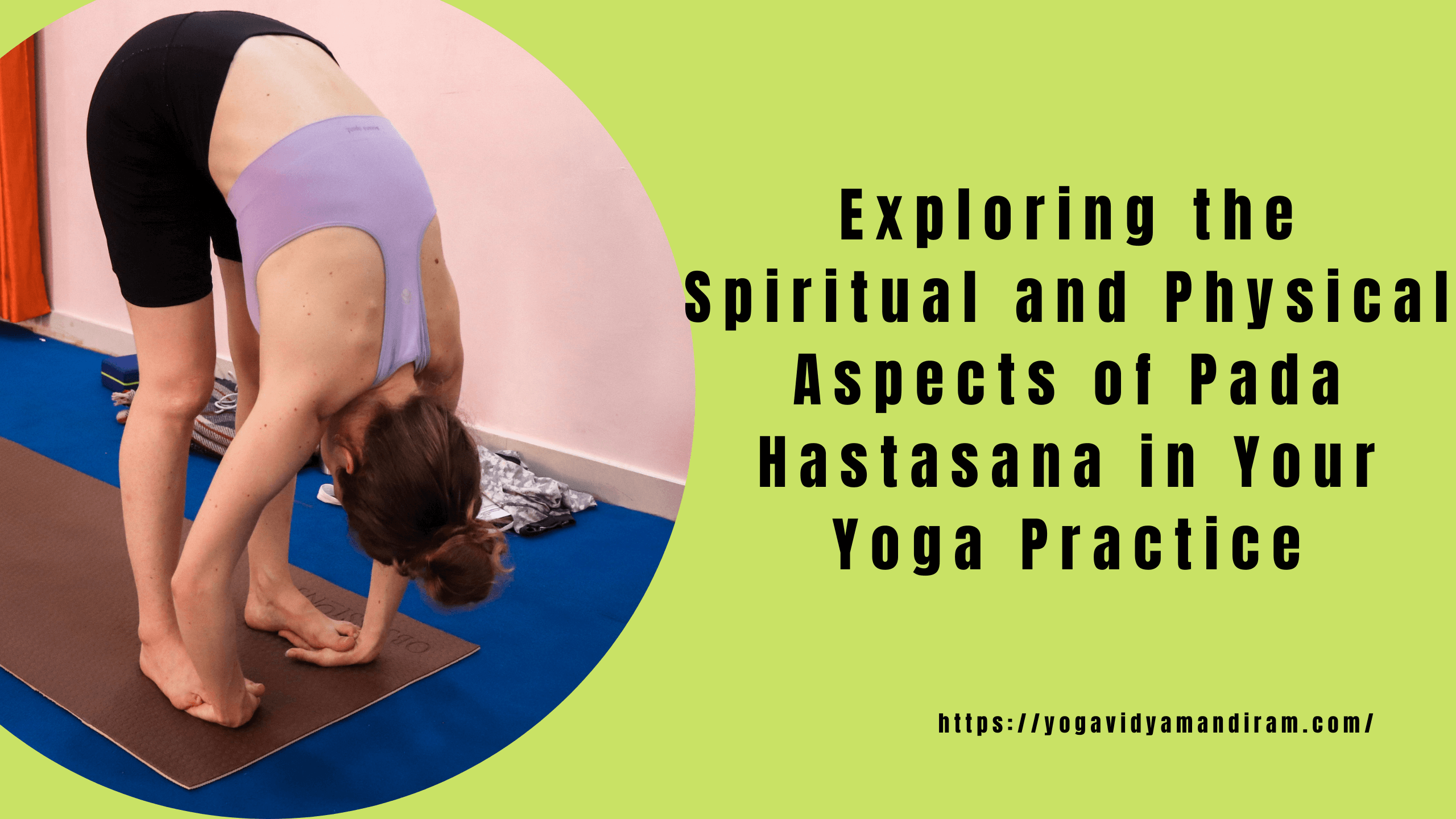Namaste and welcome to the transformational practice of yoga, in which each pose is a balance between the body and the spirit. Today we are going to discover the universe of Pada Hastasana or Forward Bend Pose, a basic asana that Hyperbolically speaks of more than physical alignment. This pose helps to stretch and strengthen your body, as well as encourages you to discover the inner spiritual relations inside yourself. Regardless of whether you are a long-time yogi or are merely setting foot on your mat, the ability to comprehend both the physical biomechanics and spiritual connotations of Pada Hastasana will help you deepen your practice in an extraordinary way. Then grab your mat and a deep breath and shall we begin this educative journey together!
Introduction to Pada Hastasana or Hand-to-Foot pose
Pada Hastasana or Hand-to-Foot Pose is one of the poses that elegantly balances the relationship between body and spirit. This seemingly easy and elevated posture asks us to discover not only our physical boundaries but our inner terrain as well. When we fold forward and grab our feet we are not only stretching, we are on a path of self-discovery and awareness.
As a long time yogi or a beginner, knowing what Pada Hastasana can do to improve your body can aid your practice in many ways. We will explore its spiritual value in this article, reveal the numerous physical advantages it brings, and teach you how to align it correctly. Come to the end of this exploration and you will understand how this is a powerful pose that can add value to your yoga practice and life. Then unroll your mat and get ready to explore everything that Pada Hastasana can suggest!
The spiritual significance of Pada Hastasana in yoga philosophy
In Pada Hastasana or Hand-to-Foot pose, the body and the spirit are linked. This pose is significant in yoga philosophy as a symbol of letting oneself fall to the earth and at the same time making the connection with the present moment.
As the practitioners bow forward, they allow introspection. This gesture of stretching towards the feet is a symbolic descent into the self-acceptance and modesty.
This gravitational association brings in a feeling of permanence. It urges one to be without ego and be open to new experiences.
Besides, Pada Hastasana has the ability to develop awareness. With each breath, one becomes more centered in the inner thoughts and feelings and this allows clarity in the midst of a busy life.
Practicing this pose is a chance to be closer to the higher consciousness. This position is also excellent to help practitioners find that their spiritual practice is no longer limited by their physical body as they become aware of their breath and set intentions.
More Details: 200 Hour Yoga TTC in Rishikesh
Physical benefits of Pada Hastasana for the body and mind
In Pada Hastasana, also referred to as Hand-to-Foot pose, there are numerous physical advantages, which are experienced in the pose to the benefit of body and mind. This forward fold studies the hamstrings, calves, and spine, encouraging flexibility in your lower body.
It promotes improved blood flow as you progress into the pose. With better circulation, there is the possibility of having more energy and feeling vital in daily undertakings.
The mild inversion that this pose produces is also beneficial to digestion. It massage sh jurisdictions organs and may assist in relieving bloating or tension discomfort.
Mentally, Pada Hastasana develops focus. Through concentrating on your breath and position in the pose, you build mindfulness that can ease stress and anxiety.
This combination of stretch and rooting brings about a balanced relation between your body and mind, between your physical condition and your mental awareness. By taking up these advantages, your practice becomes something very enriching.

Steps to properly perform Pada Hastasana with variations for different levels
To perform Pada Hastasana, start by standing tall in Tadasana (Mountain Pose). Ground your feet firmly into the mat.
Inhale deeply as you raise your arms overhead, lengthening through your spine. Exhale and hinge at the hips to fold forward. Keep a soft bend in your knees if necessary.
New students: place hands on shins or thighs, rather than reaching the floor. This adjustment assists in preserving the position of the back and relieving the strain.
Advanced middle-level practitioners may be able to take their ankles. Make sure that shoulders are kept down away from ears in this stretch.
More advanced yogis may stretch both palms on the floor or place yoga blocks under each hand to make the pose more supported and deep.
Pay attention to an even breathing in and out with each variation to improve flexibility and inner peace.
Precautions and modifications for beginners and those with injuries
Beginners and injured students should prepare the Pada Hastasana carefully when practicing the pose. Pay attention to the cues of your body and you will never have to strain or be uncomfortable.
When you experience tightness in the hamstrings, then bend the knees slightly. This adjustment assists in relieving tension and also staying aligned.
Comfort may be facilitated by the use of props, too. Use of a yoga block under each hand will bring stability and support and you can concentrate on the stretch without straining too much.
You should also watch your back. In case of rounding, draw your belly button towards the spine and maintain a neutral spine in the pose.
People having lower back pain or sciatica may find it beneficial to practice this pose with a wall to provide balance and security as the correct form is maintained.
Be mindful of breathing; deep breaths can help ease any anxiety around trying new poses or modifications.
More Details: 300 Hour Yoga TTC in Rishikesh
Incorporating breathwork and meditation into Pada Hastasana
The use of breath work and meditation are important in the improvement of the Pada Hastasana experience. Placing your attention on your breath as you fold forwards and out. This conscious breathing will assist in grounding your consciousness in the here and now.
As you get set to get into the pose, inhale deeply. See energy flowing into your body, activating every cell. As you breathe out, get rid of the tension or stress accumulated.
You may want to include a mantra in this practice. Repeat affirmations silently, which appeal to your intentions this gives a spiritual touch to every breath.
In Pada Hastasana, you may close your eyes, when it is comfortable. Listen to the cadence of your breathing and allow that to carry you further into a state of relaxation.
The combination of the two makes a physical stretch into a meditation experience, where one is able to achieve mental clarity, whilst emotional strengths are cultivated.
How Pada Hastasana can deepen your spiritual connection during a yoga practice
Pada Hastasana welcomes an incredible feeling of steadiness and embodiment. As you bow forward the physical movement is reflected as an inward movement. They are your hands on your feet, a sign of humility and of giving up, which are essential in the spiritual practice.
As you concentrate on your breath in this pose you are able to establish a connection between the body and the spirit. The breath in makes the awareness grow and the breath out makes the tension go. This rhythm brings a clear mind, clear heart.
With the calm of thoughts, room is created to look inside. Here in this silence, there can come an understanding of the interrelatedness of all beings. Pada Hastasana can be more than a stretch, with a daily practice it can be a ritual that fosters self-awareness.
When you embrace the pose, it does not only enhance your yoga practice, but also improves your entire spiritual journey.
Tips for incorporating Pada Hastasana into your daily routine
Pada Hastasana can be a rejuvenating posture when practiced regularly. Begin with only a few minutes a day in the mornings. This will assist you to form a habit.
See how you can combine it with your other work. An example is to do the pose when waiting for your coffee to brew or during work break times.
Be in tune with your body and modify accordingly. When you feel stiff, stay in the pose longer, when you feel energized, faster through the pose.
Combine with conscious breathing. Take a deep breath and then as you bow forward release the breath over your legs.
Finally, have a purpose in mind per session. It might be gratitude or self-love that will allow strengthening the contact with the body and the spirit in Padahastasana.
Conclusion: The holistic benefits of practicing Pada Hastasana in your yoga journey
Doing Pada Hastasana is more than a stretch. This is a pose that links the body, mind and spirit. It is promoting awareness, welcoming you to concentrate on your breathing and the current moment. You can actually discover that as you sink into this pose, the stress just drains away and you feel clarity.
Pada Hastasana also helps you in your daily life too. It will allow not only improving flexibility but also stabilizing emotions and strengthening a mentally restraining mind once you add it to your habitual practice. This poses a grounding effect on the body which can develop a feeling of calm in the midst of a hectic life.
If you are just starting out in yoga or are a long time practitioner, the pose of Pada Hastasana will provide you with a rewarding experience that simultaneously improves your physical well being as well as spiritual well being. Every time you get on the mat to do this pose is a chance to re-establish contact with yourself on many levels, strengthening your body and creating possibilities of getting to know yourself better.
The rest of your yoga journey is to ensure that what you learn in one practice is effortlessly transferred to other areas of your life. As with any worthwhile endeavor, the consistency is crucial; therefore, find a place in your practice to practice Padahastasana and experience the miracles of this pose happening within you.
For More info about Pada Hastasana you can join Our 200 Hour yoga teacher training in Rishikesh



Leave a Reply